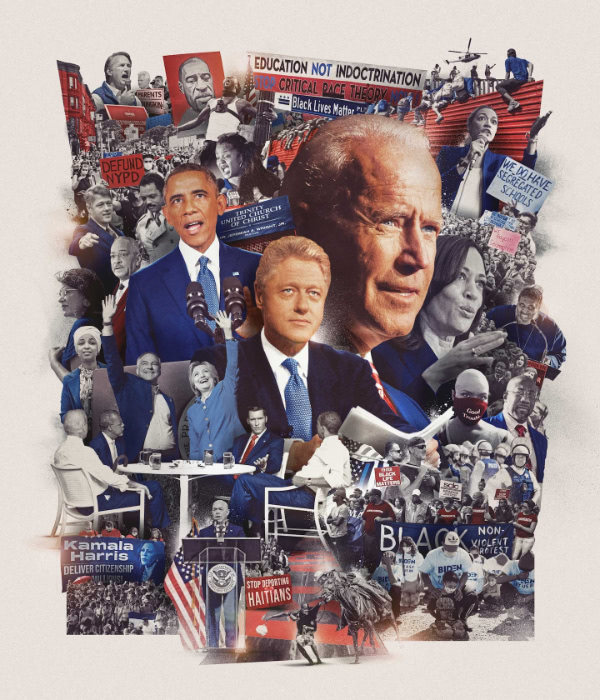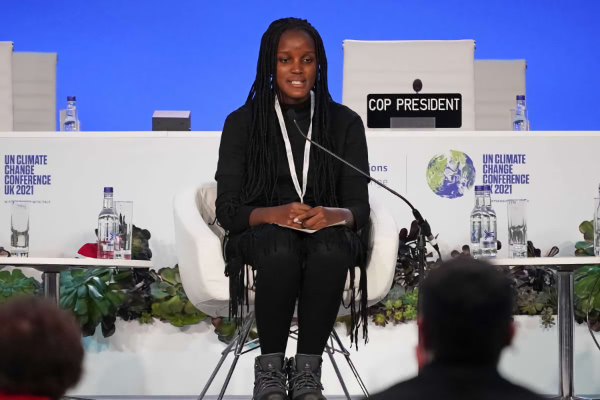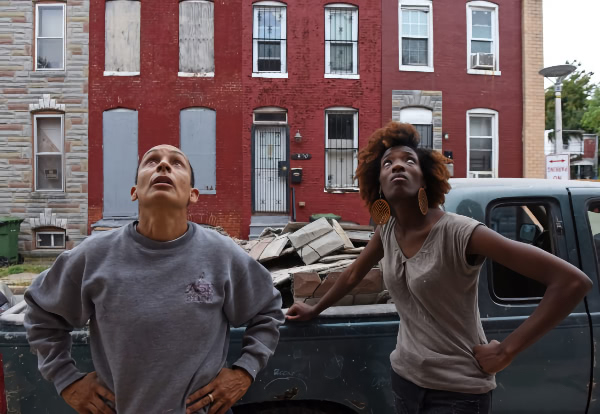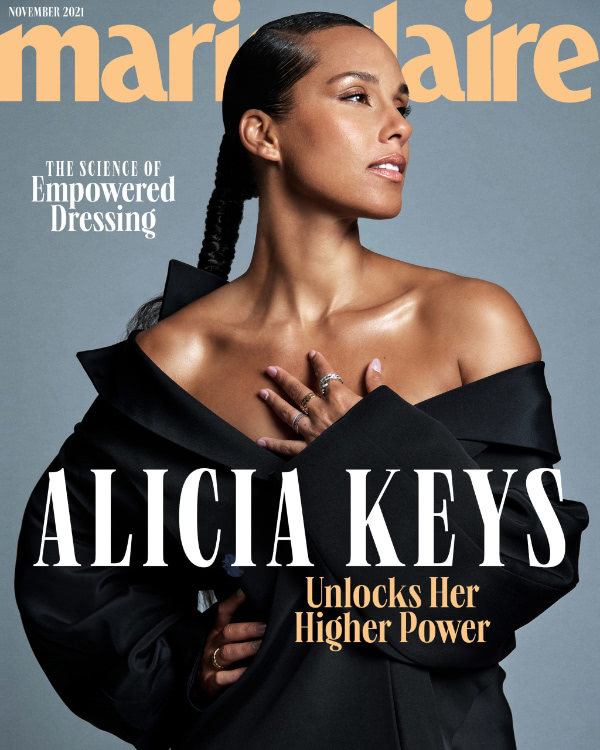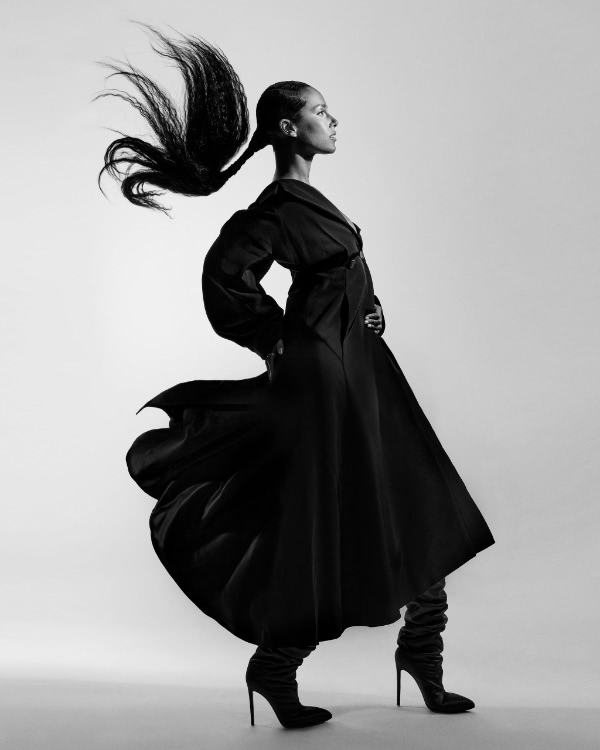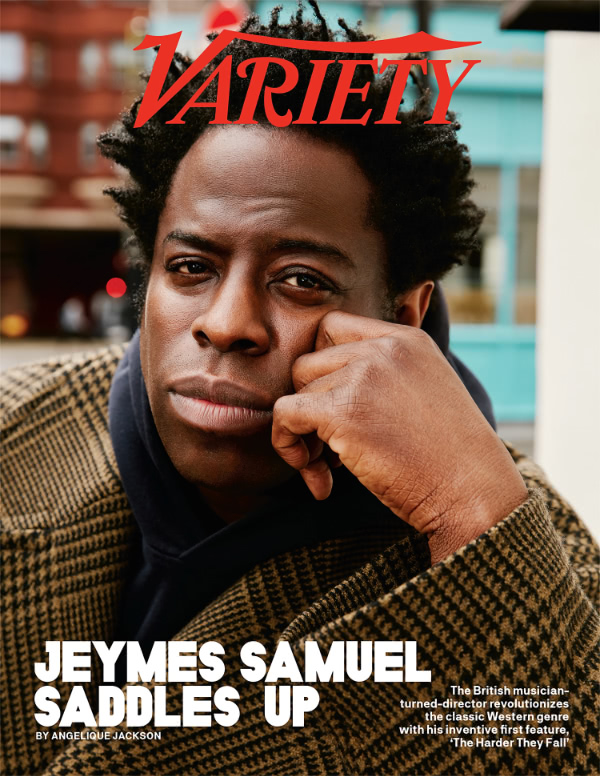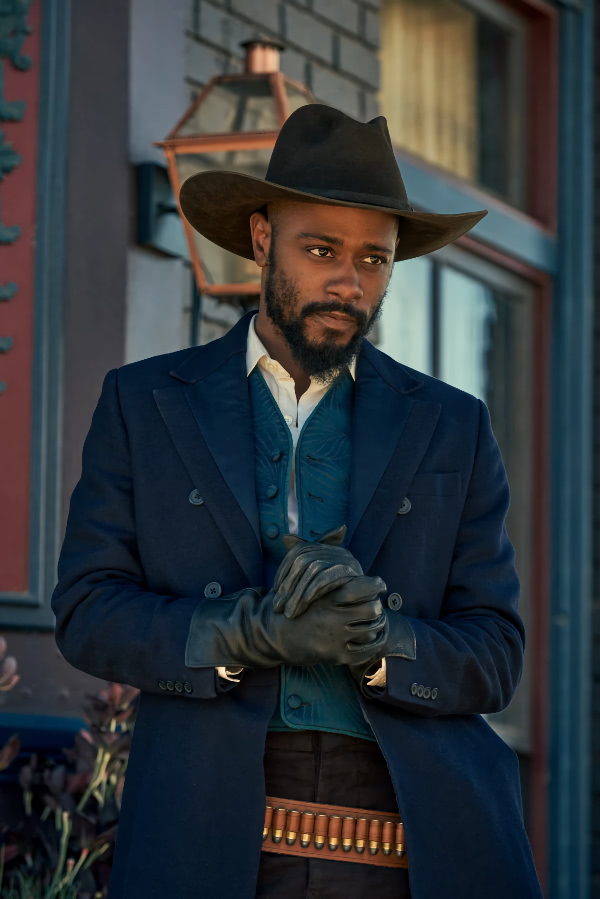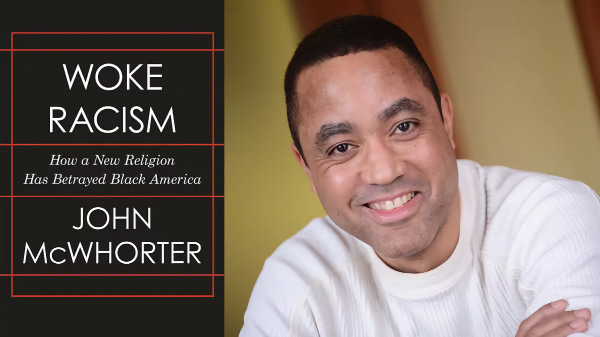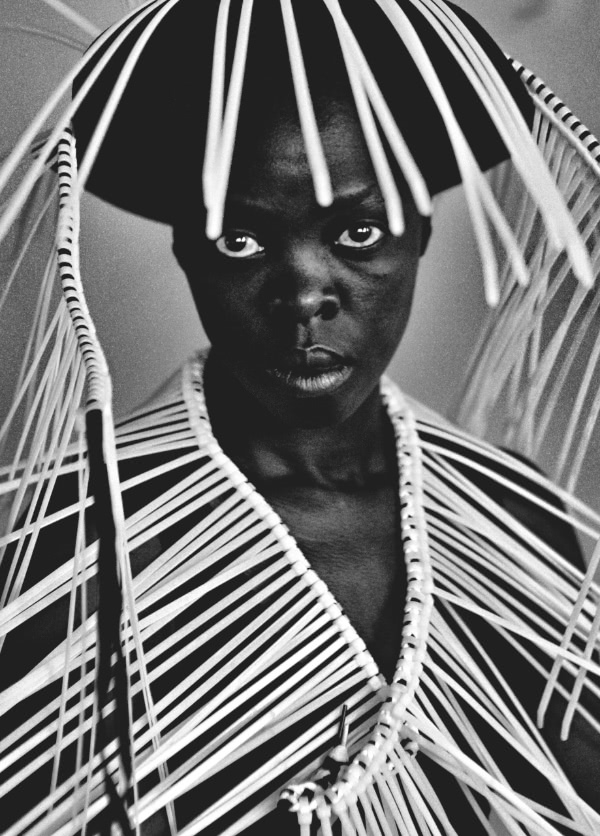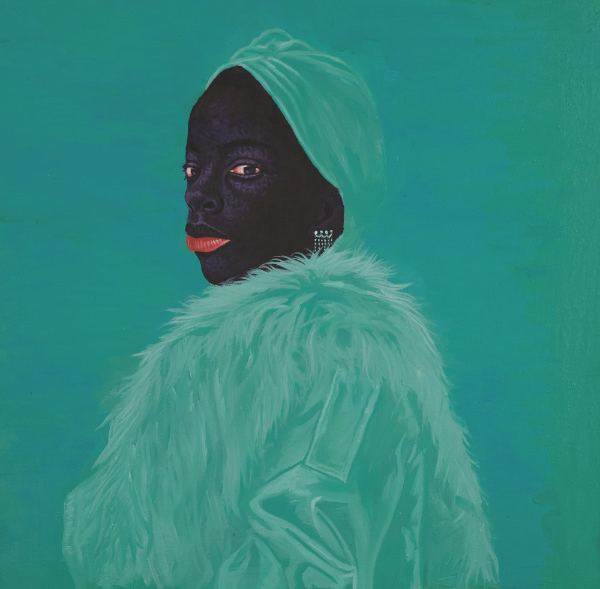Have Democrats reached the limits of White appeasement politics?
In a guest essay for The Washington Post, columnist Perry Bacon Jr. says Democrats should no longer rely on the politics of white appeasement to win over swing voters. First, because of its damaging and long-lasting effects on people of color.
The Clinton-era crime bill was part of a broader set of tough-on-crime policies enacted by Democrats and Republicans that has left Black men significantly more likely than White men to have served time in jail. The Clinton-era welfare bill made it harder for low-income families to get public benefits if the parents weren’t working, punishing children for adults’ actions. The Obama-era deportations reached unnecessarily high levels. They also did not help Obama get Republican votes for his broader immigration agenda.
And, as The Nation’s Elie Mystal wrote recently, white appeasement from the left just doesn’t win votes like it used to.
American voters are much more polarized by party than they were two or three decades ago, and there are many fewer swing voters. Much of the partisan polarization is about racial views — Democrats, including White ones, are well to the left of Republicans on questions such as whether they support the Black Lives Matter movement. So it would be hard for the party to move far enough to the right on racial issues to swing many GOP-leaning voters to their side.
Bacon doesn’t propose an end to appeasement altogether — The reality is the Democrats need a lot of votes from whites that don’t support progressive legislation on race. He does put forward alternative approaches Democrats might use to attract those voters without harming Black people. One suggestion:
Democrats could embrace more non-White candidates like Obama and Warnock, in part because they are likely to be more knowledgeable about race-based issues such as critical race theory and therefore better able than White candidates to combat GOP grievance tactics. They could emphasize that lots of ideas that are often lumped in the “civil rights” or “Black” bucket, such as voting access, integrating schools by class and race, and reducing police killings, will benefit large numbers of White people, too, particularly those with lower incomes.
You can’t crop an entire continent out of the fight against climate crisis
Climate activist Vanessa Nakate, in an opinion piece for CNN:
After a press conference with activists from European countries, including Greta Thunberg, I was cropped out of the corresponding news photograph. The photo was taken of five activists as we were all standing in a line, but someone decided only the White faces in that photograph should make the news story. I was the only person of color, and I was taken out -- I was also not mentioned in the accompanying article. […]
But they did not just crop me; they cropped an entire continent.
This story encapsulates one of the biggest issues with how we talk about the climate crisis. Globally, we are ignoring the people who are most affected by it. And because of that, so many people in the global south […] have lost hope.
What Kyle Rittenhouse’s tears reveal about America
Peniel E. Joseph, writing for CNN:
His protracted sobs -- and people’s telling reactions to them -- spoke volumes about the moment America now finds itself in. Whether or not Rittenhouse is convicted, the perspective he represents -- galvanized by the anger, fear and prejudice of White Americans -- has already achieved its ends: normalizing a kind of racial privilege exposed, but far from extinguished, in the wake of George Floyd’s murder last year.
Philadelphia first major city in the U.S. to ban low-level traffic stops
NPR’s Jonaki Mehta speaks with Philadelphia councilmember Isaiah Thomas about the new measure:
“We know that there’s a history of oppression and institutional racism that has plagued communities of color as it relates to the relationship we’ve had with law enforcement here in the city of Philadelphia,” Thomas said.
The new legislation bans stops for:
- Driving with a single broken brake light
- Driving with a single headlight
- Having a registration plate that’s not clearly displayed, fastened, or visible
- Driving without an inspection or emissions sticker
- Bumper issues
- Minor obstructions (like something hanging from a rearview mirror)
- Driving without vehicle registration within 60 days of the observed infraction
Simple and brilliant. This is a good place to start in unbundling the police. And there’s buy in from the Philadelphia Police Department as they helped draft the legislation.
How a group of determined Black women are saving a block in West Baltimore
Marketplace’s Amy Scott checks in on Black Women Build:
Over the past two years the nonprofit Black Women Build – Baltimore has been buying vacant houses, training young Black women to help renovate them, and then selling the houses to the women at affordable prices. So far, there are four new homeowners on the block. Another three houses are almost done.
Alicia Keys Gets What She Wants
Jessica Herndon, writing for Marie Claire:
“Every room in this house has a beautiful Black face,” she tells me. “When my kids walk in this house, they look on these walls they see their beautiful Blackness and it is normal. That does give you a certain sense of validation or belonging.”
How First-Time Feature Filmmaker Jeymes Samuel Is Reinventing the Western With ‘The Harder They Fall’
Ok, I ignored this when it was published about a month ago. I was hyped for the movie after seeing the trailer, but I was also hoping they didn’t screw it up. And, they didn’t — The Harder They Fall is one of the best movies of the year.
Samuel directed the film, co-wrote the screenplay, and produced the soundtrack along with Jay-Z. He’d been dreaming of the story for the movie for more than a decade.
Angelique Jackson, writing for Variety:
To help him realize his vision, he’d assembled an all-star cast headlined by Idris Elba, Jonathan Majors and Regina King, fresh off her supporting actress Oscar win for “If Beale Street Could Talk.” Netflix had put up $90 million to fund Samuel’s radical reimagining of what he calls the New West, an epic canvas populated by bandits and lawmen, saloonkeepers and stagecoach robbers, gunslingers and sharpshooters, all of whom are Black.
Talk about a dream come true.
The real-life figures that inspired Netflix’s ‘The Harder They Fall’
Sonaiya Kelley, writing for the Los Angeles Times:
“These. People. Existed.”Cherokee Bill, played by Lakeith Stanfield
Born Crawford Goldsby in 1876, Cherokee Bill was an infamous outlaw who rode with the Cook Gang. With Black, Sioux, Mexican, Cherokee and white ancestry, he was light enough to pass for white.
Goldsby attended Native American schools in Indian Territory (present-day Oklahoma) from age 7 before falling in with a rough crowd and engaging in crimes ranging from stealing horses to train and bank robberies. He killed seven to 13 people before he was apprehended and convicted of murder.
Goldsby unsuccessfully attempted to escape from jail, killing a guard in the process and earning a second murder conviction. He was hanged in 1896 at age 20. When asked if he had any last words, Goldsby said: “I came here to die, not to make a speech.”
‘Woke Racism’: John McWhorter argues against what he calls a religion of anti-racism
Morning Edition host Steve Inskeep interviews the author and Columbia University professor about his new book.
MCWHORTER: The idea is that you are to be fired. You are to be dismissed from polite society. You are to be sanctioned. You can’t be among us. You’re dirty. One curator of art at the San Francisco Museum of Modern Art lost his job - his name was Gary Garrels - because he said that to not pay attention to any white artists, even amidst the racial reckoning, would be reverse discrimination. For that and only that he was fired. That’s not right. That’s the new environment.
Phaidon Surveys the Work of More Than 300 African Artists
Grace Ebert, writing for Colossal:
One of the most expansive volumes of its kind, African Artists: From 1882 to Now compiles a broad sampling of works from more than 300 modern and contemporary artists born or living on the continent. Within its 350-plus pages, the massive text spans a range of mediums and aesthetics, from Mary Sibande’s sprawling postcolonial installations and Wangechi Mutu’s fantastical watercolor collages to the cotton-embroidered photographs by Joana Choumali.
Thanks for reading. See you next week.

